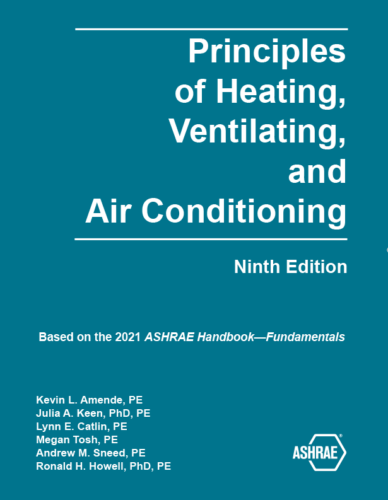Mechanical and Biomedical engineering faculty-in-residence Lynn Catlin is a lead contributor to the ninth edition of the Principles of Heating, Ventilating, and Air Conditioning textbook.

The textbook outlines key HVAC fundamentals from the 2021 American Society of Heating, Refrigerating and Air-Conditioning Engineers Handbook–Fundamentals. The book is suggested as both a textbook and as a reference book for undergraduate engineering courses, for courses at technical and vocational schools, for short education courses for engineers, and for adult education for professionals when combined with the ASHRAE handbook.
“It was excellent to have the advice and assistance of one of the original authors, Dr. Ronald Howell,” Catlin said. “[Howell] taught Principles of HVAC here in the department a long time ago and still lives here in the Valley.”
The ninth edition of the textbook received significant changes for the revision, including chapter content and organization changes, the removal of residential discussions, and a more direct focus on commercial calculations and applications. The revision helped remove extraneous material from the textbook.
Catlin updated several specific chapters, including basic HVAC calculations, system descriptions, and significant updates on Design Conditions and Duct Design.
Specific changes include the following, among many others:
- The first chapter provides not just history but also updated information regarding current trends and the possible future of the HVAC industry.
- The Thermodynamics and Psychrometrics chapter content is reorganized, and additional materials on psychrometrics, including additional psychrometric charts covering low temperatures and higher elevations, are included.
- The System Loads chapter reflects reorganization to better walk the user through the calculation process used by professionals.
- The Energy Estimating Methods chapter streamlines to better reflect the current processes used by today’s energy modelers and connects energy estimation with load calculations presented in the textbook.
- The Duct and Pipe Sizing chapter includes expanded information, tables, and charts used for hydronic pipe sizing with updated example problems, allowing for more thorough topic coverage.
- The Hydronic Heating and Cooling System Design chapter includes updated general content based on the latest design trends and requirements as well as expanded information on typical hydronic heating/cooling equipment and system types.
Along with these changes, the textbook removed several chapters from the print version, but will still be available online through online materials for students, educators, and professionals.
-By Jamie Fink